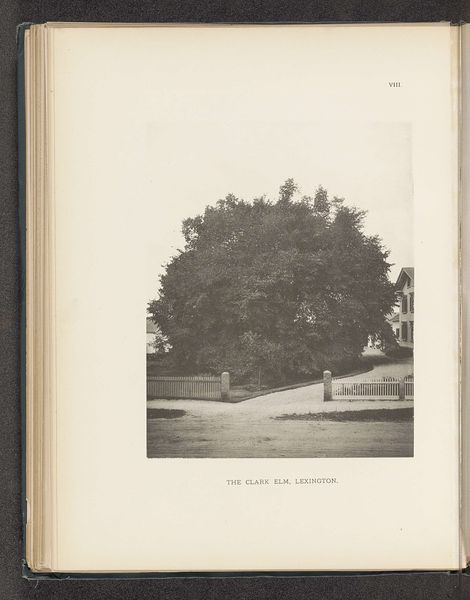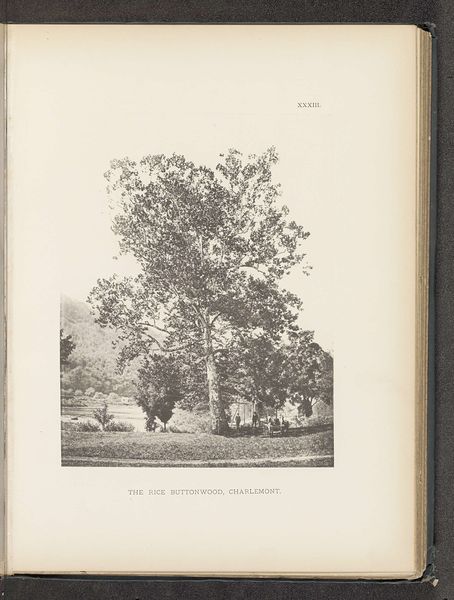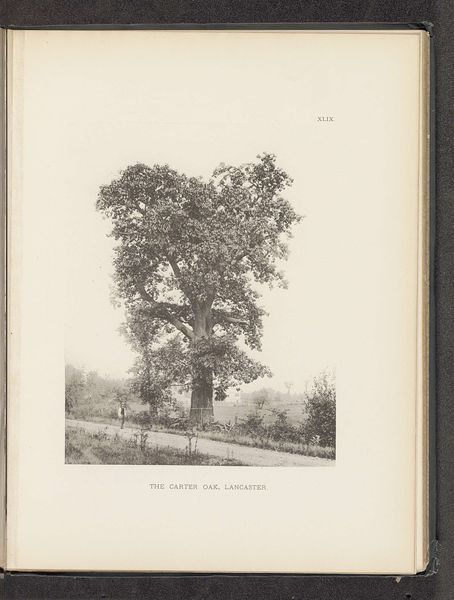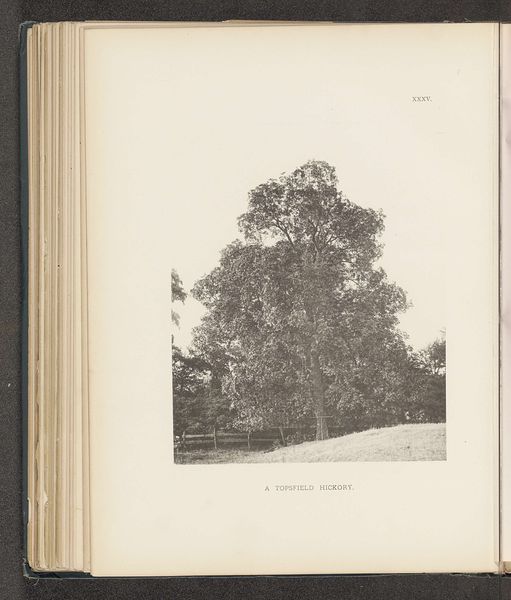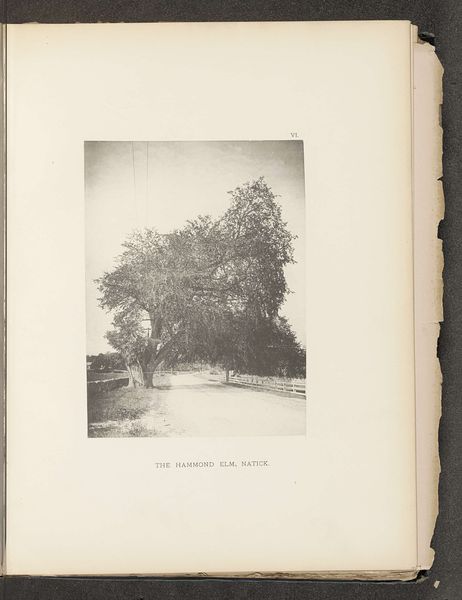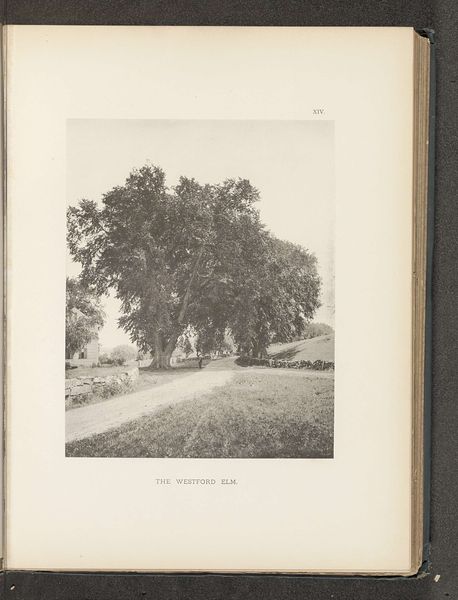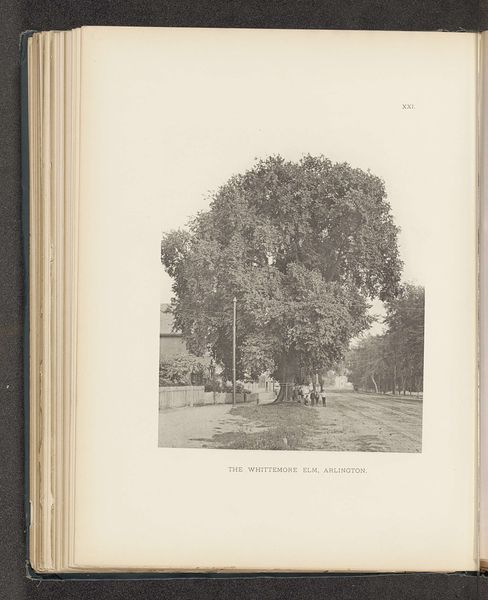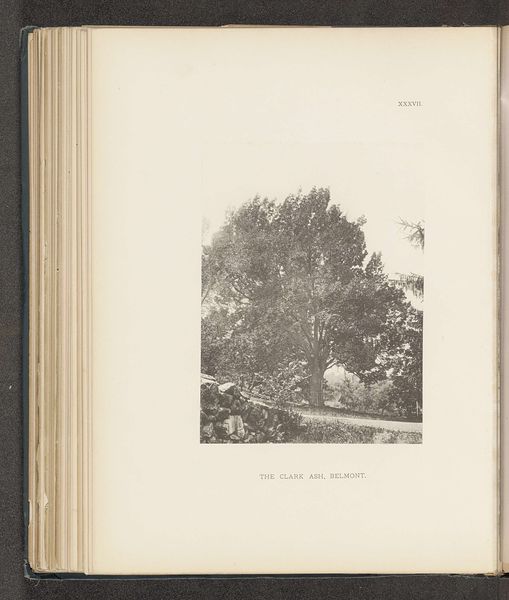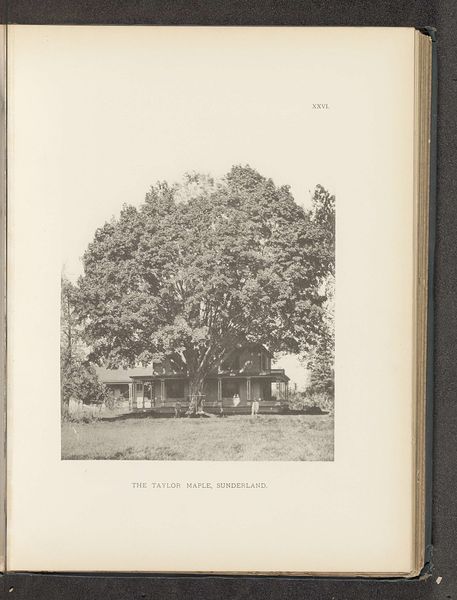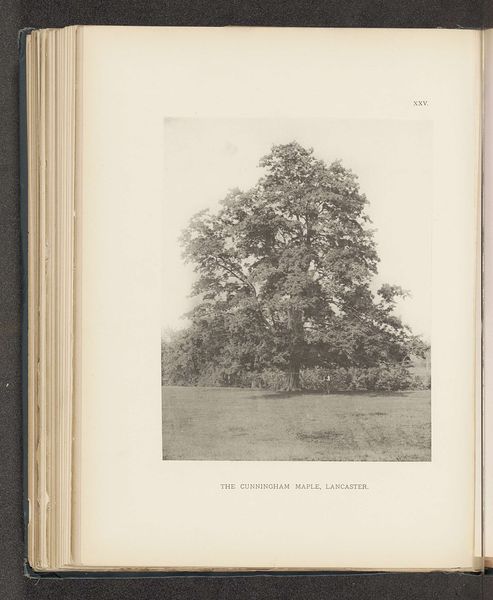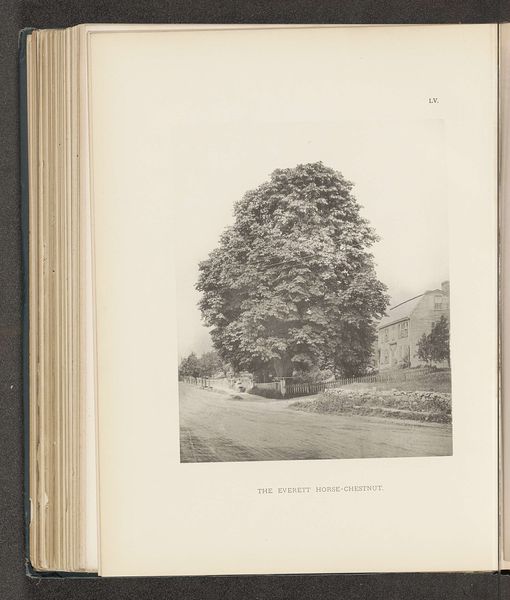
print, photography
#
still-life-photography
#
pictorialism
# print
#
landscape
#
photography
Dimensions: height 217 mm, width 176 mm
Copyright: Rijks Museum: Open Domain
Editor: We’re looking at a print called "The Brooks horse-chestnut, West Medford," made before 1890 by Henry Brooks. The first thing I notice is how imposing this single tree seems, mirrored perfectly in the water below it. It's almost like a doorway. How do you interpret this work? Curator: This is a lovely example of pictorialism, isn’t it? For me, the horse-chestnut itself carries a lot of symbolic weight. Throughout history, trees have represented life, growth, and interconnectedness. Their reflection, especially rendered with such detail here, suggests introspection and a doubling of meaning. Think about what the photographer might be implying about nature, about the self, about time itself, as they exist within that mirrored image. Does the reflection change the original image at all, would you say? Editor: That's fascinating. The reflection almost completes the tree, making it a perfect, self-contained circle. Does that have any bearing on its interpretation? Curator: Precisely. Circular forms often denote wholeness, the cyclical nature of life, and a return to the origin. By mirroring the tree, Brooks might be suggesting a completeness or a self-sufficiency within nature itself. Furthermore, horse-chestnuts specifically were thought to ward off illness and attract good luck. Does knowing that potentially impact your view? Editor: It adds another layer, like a hope for health and prosperity woven into the image. It feels more personal now. Curator: And notice the printmaking process itself. Pictorialists were trying to elevate photography to the level of painting through manipulation of the image. They are layering cultural meaning onto these otherwise objective landscapes. Does recognizing the artistry involved change your initial reaction to the piece at all? Editor: Absolutely. It makes me see it as less of a snapshot and more of a deliberate construction, a symbolic landscape carefully crafted by the photographer. I had not thought of that! Curator: Exactly. By focusing on the symbols and photographic approach, we deepen our engagement and appreciation. Editor: I definitely have a richer understanding now. I see the depth of symbolism beyond just a pretty picture. Thanks so much!
Comments
No comments
Be the first to comment and join the conversation on the ultimate creative platform.
